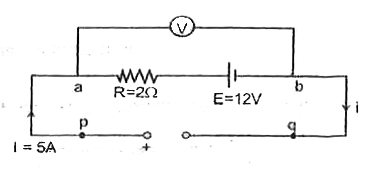In the previous problem, what will be force with which system moves? (Use(√2)=1.4)
3.05N
4.0N
0.5N
1.0N
The correct Answer is:C
To solve the problem of determining the force with which the system moves, we will follow these steps:
Step 1: Identify the forces acting on the system
We have two forces acting on the system:
- F1=4N acting in the positive x-direction.
- F2=3.5N acting in the negative z-direction.
Step 2: Determine the net force acting on the system
To find the net force, we need to consider the forces acting in the same direction. Since F1 and F2 are acting in different directions (x and z), we only need to consider F1 for the x-direction.
The net force Fnet in the x-direction can be calculated as:
Fnet=F1−F2
Step 3: Substitute the values
Substituting the values of the forces into the equation:
Fnet=4N−3.5N
Step 4: Calculate the net force
Now, perform the subtraction:
Fnet=0.5N
Step 5: Determine the direction of the net force
Since F1 is greater than F2 and acts in the positive x-direction, the net force will also be in the positive x-direction.
Final Answer
The force with which the system moves is:
Force=0.5N(in the positive x-direction)
---
We have two forces acting on the system:
- F1=4N acting in the positive x-direction.
- F2=3.5N acting in the negative z-direction.
To find the net force, we need to consider the forces acting in the same direction. Since F1 and F2 are acting in different directions (x and z), we only need to consider F1 for the x-direction.
Fnet=F1−F2
Substituting the values of the forces into the equation:
Fnet=4N−3.5N
Now, perform the subtraction:
Fnet=0.5N
Since F1 is greater than F2 and acts in the positive x-direction, the net force will also be in the positive x-direction.
The force with which the system moves is:
Force=0.5N(in the positive x-direction)
Topper's Solved these Questions
- BOOK - CENGAGE PHYSICS ENGLISHCHAPTER - MISCELLANEOUS VOLUME 5EXERCISE - Multiple Correct34videos
MISCELLANEOUS VOLUME 5
- BOOK - CENGAGE PHYSICS ENGLISHCHAPTER - MISCELLANEOUS VOLUME 5EXERCISE - Linked Comprehension84videos
MISCELLANEOUS VOLUME 5
- BOOK - CENGAGE PHYSICS ENGLISHCHAPTER - MISCELLANEOUS VOLUME 3EXERCISE - True and False3videos
MISCELLANEOUS VOLUME 3
- BOOK - CENGAGE PHYSICS ENGLISHCHAPTER - NUCLEAR PHYSICSEXERCISE - ddp.5.514videos
NUCLEAR PHYSICS
Similar Questions
In the previous problem, what will be acceleration of the system (inm/sec2)?
View SolutionIn the previous problem what will be refractive index of the liquid so that point E is visible (PE=R/3) through the telescope in air when the vessel is filled with liquid completely, without moving the telesope and vessel.
View SolutionIn the previous problem, instead of being stationary, the system enters the magnetic field with a velocity 0.5m/sec along y-direction. Along which direction the system will move now?
View SolutionConsider the situation of the previous problem. The force on the central charge due to the shell is
View SolutionIn the previous problem. The friction force applied by ground on block B is
View SolutionIn the previous problem, the maximum range of movement of the centre of the part of the circle from line AD in which charged particle of charge Q moves with a velocity v when (θ) is positive to when (θ) is negative is given by
View SolutionIf in the previous problem the battery is being charged with a current of 5 amp, in what direction will current flow inside the battery, and what will be the reading of the voltmeter
 View Solution
View SolutionSuppose the ceiling in the previous problem is that the elevator which is going up with an acceleration of 2.0ms2. Find the elongations.
View SolutionIn the previous problem, if θ is the angle sbtended by the Sun at the planet, then temperature at which planet radiates energy is proportional to
View SolutionConsider the situation of the previous problem. Take the table and the ball as a system friction is then an internal force. As the ball slows down the momentum of the system decreases. Which external force is responsible for this change in the momentum?
View Solution

